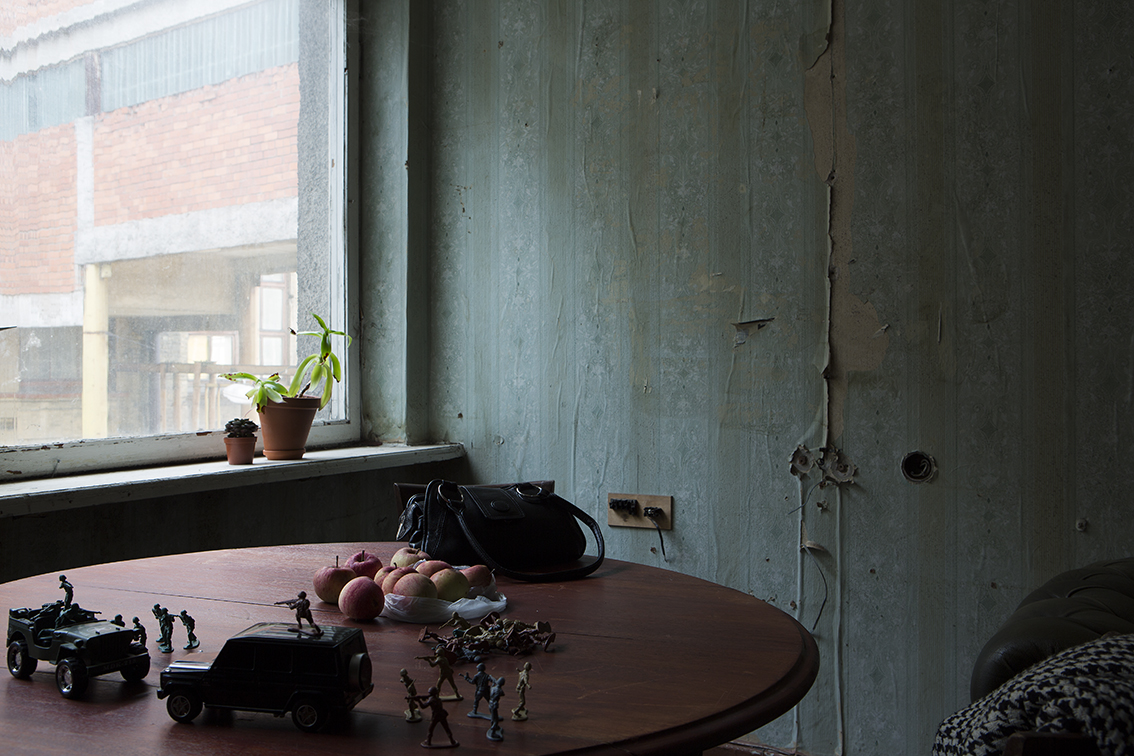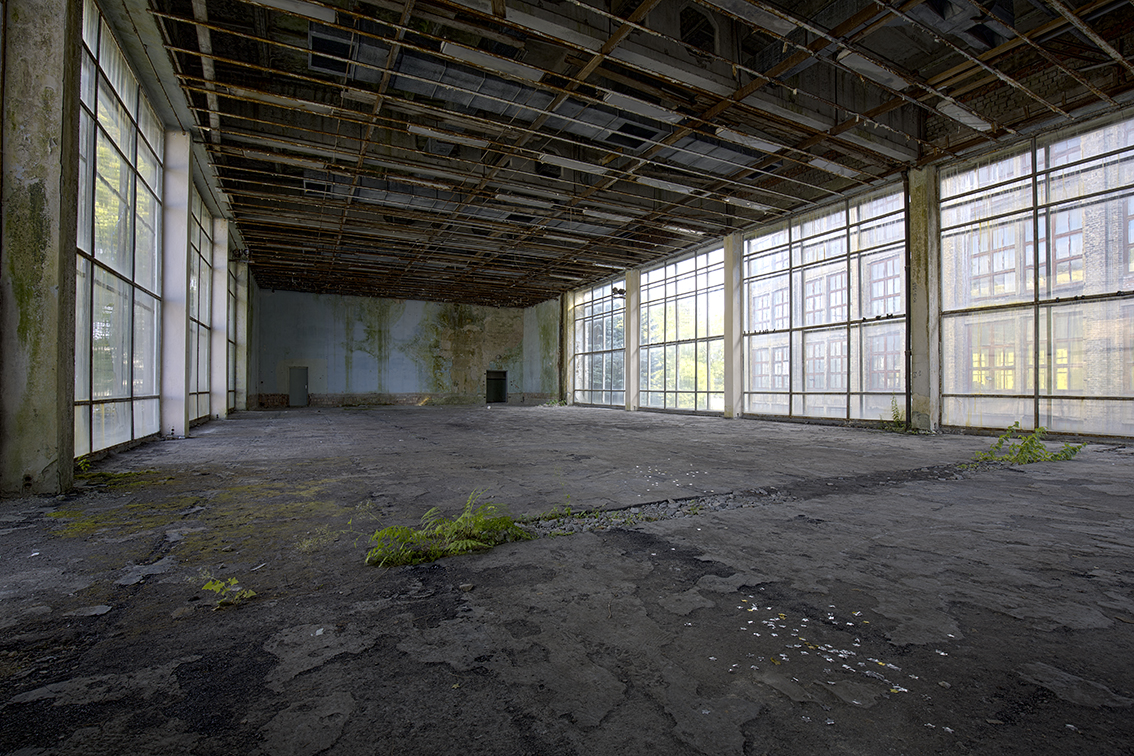Drawing on her personal experience with the local scene in Latvia, Apolena Vanišová introduces us to the international festival of contemporary theatre Homo Novus (www.homonovus.lv), which ran from the 6th to 12th of September 2018 in Riga. In her view, this cultural event was not an isolated phenomenon, but more like a mirror of the consequences of the broader social, economic and ecological context. The atmosphere of a city ensnared between a forlorn past, the dreamy, melancholic severity of the present, and the insecurity of the future, is becoming a parable of festival’s theme, toying with the interdependence between a natural world shaping humankind and a humankind shaping nature.
Gundega Laiviņa, director of the Homo Novus International Festival of Contemporary Theatre, which takes place in Riga, Latvia, describes the theme as humankind in nature and nature in humankind, and the question of what remains in nature when humankind disappears. The day after I arrived I set off in the direction of the Eduards Smiļģis Theatre Museum, one of the festival venues, where I was to pick up a map of a route on which the locations of four site-specific audio installations by the British artist Jon Law entitled Terrain Vague were located. These works were created by Law during a residency with Magic Carpets in Riga and dealt with the neglected details of public space. For Terrain Vague, he selected four architectural structures. Three of these involved the remains of buildings without any practical or aesthetic function, which now played host to an audio composition intended to reconnect festival visitors and random passersby with the otherwise overlooked locations in public space. The installations were set at some distance from each other, and so when the listener moved between them they came into close contact with an urban landscape that (as I discovered) came across as derelict, both during the day and at night. This is mainly due to the fact that, following the collapse of the Soviet Union, Latvia’s entry into the European Union and during the subsequent economic crisis, the country’s population dropped considerably, resulting in a huge number of abandoned places and buildings: in Riga this is true of around a third of all buildings. Although Jon Law’s installations reacted to places that had been abandoned for far longer, moving between them made one painfully aware of a pressing problem (albeit attractive to the viewer) the city currently faces. In the evening, Law combined all of the sound compositions into one as part of a concert at the Eduards Smiļģis Theatre Museum. And so here, as the day drew to a close, all the visitors to Terrain Vague came together for a moment.

The problem of a depopulating city was dealt with by two other projects mounted at the festival as part of the Magic Carpets platform, namely a staging of Leap Second by the Latvian artists Māry Gaņģe and Kate Krolle, and the installation My Heart is a Void. The Void is a Mirror – Riga Episode by the Italian artist Gian Maria Tosatti. The project Leap Second took place in the premises of a former publishing company in Balasta dambis Street, in a closed, high-rise building, whose spacious ground floor, basement and inner courtyard now operate as a second-hand furniture store. This space served the artists as the mise en scène for a surprisingly narratival production examining the relationship of humankind to time, temporality and life expectancy.
Time was also the theme of My Heart is a Void. The Void is a Mirror, which took place in the now closed down Boļševička textile factory. In his immersive installation, Tossati invited the viewer to look behind “Europe’s well maintained facade” and posed questions relating to the contemporary state of our civilisation. In his programme notes the artist wrote: “Europe is typically perceived as a confederation of states in peace and prosperity. The truth is quite different… The continent still experiences, and is perhaps culturally disposed for war, ethnic cleansing and the destruction of cities. Is the delicate historical passage through which we are currently travelling simply a trauma or an opportunity? Is it the funeral of our civilization or its rebirth”? The possibility is held out of an optimistic response. The installation itself, located in a multi-storey abandoned factory, was visited by viewers one by one (literally – you could not t enter until the person before you had come out), and was post-apocalyptic in character. The viewer walks past the porter’s lodge to find a television behind a drawn curtain. Sliced apples are drying on storage heaters and the porter is asleep on an ottoman, his head to the wall. The viewer then walks up a staircase into a corridor on the first floor and passes through the former offices now bedsits housing entire families of immigrants. The viewer then sees the remains of breakfast on the table, a book that someone is reading, an open cupboard, clothes being sewn, homework being done… And yet there is no one here, something doesn’t add up. The tea in the teapot has mould on it. It’s the same in all the little households. How long has it been since the occupants left? Why did they not return? On the floor of the large, glass fronted hall, from which ferns grow, there lies a forgotten, perhaps deserted, white toy animal. The dark corridor leading from the hall and around a corner ends in a small room lit by a fluorescent lamp, where a bareheaded girl sits on a bed with her knees pulled up to her body wearing a white nightdress and watching television. And on the ground floor, beneath a coffered ceiling from which a tangled mess of cotton wool is sticking out, a dead person covered by a blanket is lying connected to instruments. There is a constant tone and a straight line on the monitor. How long does this moment last? Five minutes, an hour, a day or two, a week? Who pulled the deceased person’s blanket over their head without switching off the devices they are connected to? The scene contains no hyperbole or any moment of relief. Only the theatrical layout of the installation provides relief and is the only thing allowing the witness of all this to sleep that night. Yet even then their dreams will be filled with the images of the young birches growing there and trying to survive between the two glass walls of the wall of the abandoned textile factory.

A similar theme was dealt with in the opera Unknown Unknown, a collaboration involving the British composer Oliver Christophe Leith, the Latvian director Viesturs Meikšāns and the German playwright Kornelius Paede. The work reflected upon the transitional period from Anthropocene to post-Anthropocene, offering the viewer a factual, personal and artistic commentary on how civilisation has reached this turning point. The production brought together a number of aggressive video sequences of the contemporary world and long, calm images of the natural landscapes that enhanced the impression of the complex relationship between homo sapiens and nature. The script, based on the sophisticated coexistence of academic music and electronics, a live and artificial voice, interpreted our recent history with cruel irony and insight. The opera was performed in the concert hall Tu jau zini Kur on the grounds of the former car workshop in Tallinn Street which, by the way, is run by the movement Free Riga.
As well as the projects referred to, I also attended a dance performance entitled Deepspace inspired by a two-month research trip made by its creator, James Batchelor, to the Antarctic and the marvellous one (wo)man show MDLSX by the Italian actress Silvie Calderoni and the Motus ensemble (the Czech public has already had a chance to sample their work at this year’s 4+4 Days in Motion festival). All of these installations and productions, like most of the other projects presented at the festival, took place in venues not originally intended for the presentation of art. The festival began using these premises when Latvia found itself facing an economic crisis, and the organisers abide by this principle to this day. Riga has only five state theatre buildings, one opera house and two independent stages, i.e. nothing to write home about. And so theatre artists often resort to local galleries and museums (some of which feature a white cube or larger open spaces), the black box in the Latvijas Kultūras Akadēmija, and the multifunctional premises at RISEBA University. Artists appearing at the festival then seek out alternative spaces, often in derelict buildings.
The festival’s creative directors place great emphasis on the overlaps between contemporary theatre, performance and artistic activism, and the festival forms a kind of experimental base for young artists in Riga. The artists who present their work here often have training in the visual arts and create projects that could, for the most part, be characterised as visual theatre or theatre installations. This is the main reason why Homo Novus has entered into a partnership with the platform Magic Carpets.
Apolena Vanišová is an artist and experimental theatre director.


